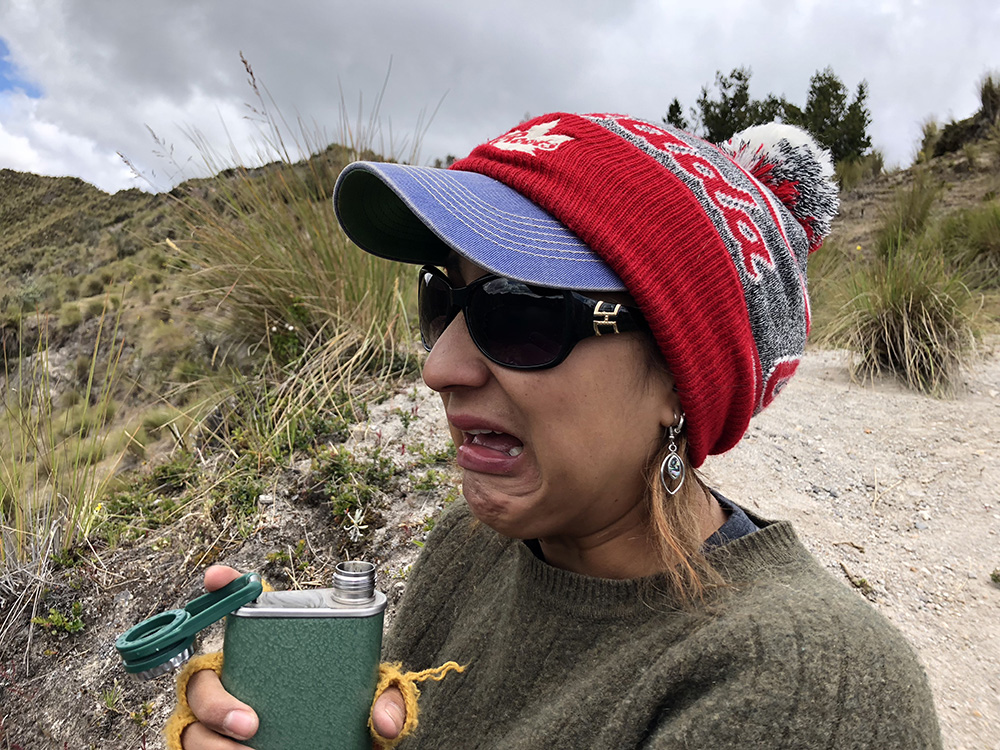Kill-a-toe-ah
So we finally took more than a lunch break kind of break, escape reality, and decided to make the trek south for some much needed camping at the Quilotoa caldera.
cal·de·rakalˈderə,kôlˈderə,kalˈdirə
noun
- a large volcanic crater, typically one formed by a major eruption leading to the collapse of the mouth of the volcano.
Quilotoa is a long-inactive volcano that last erupted over 600 years ago after a dormant period of over 14,000 years, and it’s crater lake is stunning. The view from along the hiking path atop the crater worth every effort. Unfortunately evidently you can’t swim in the water as it’s too acidic. Though we haven’t quite researched it all that much. Along the shoreline at the bottom of the crater you can take out small boats to paddle around though.
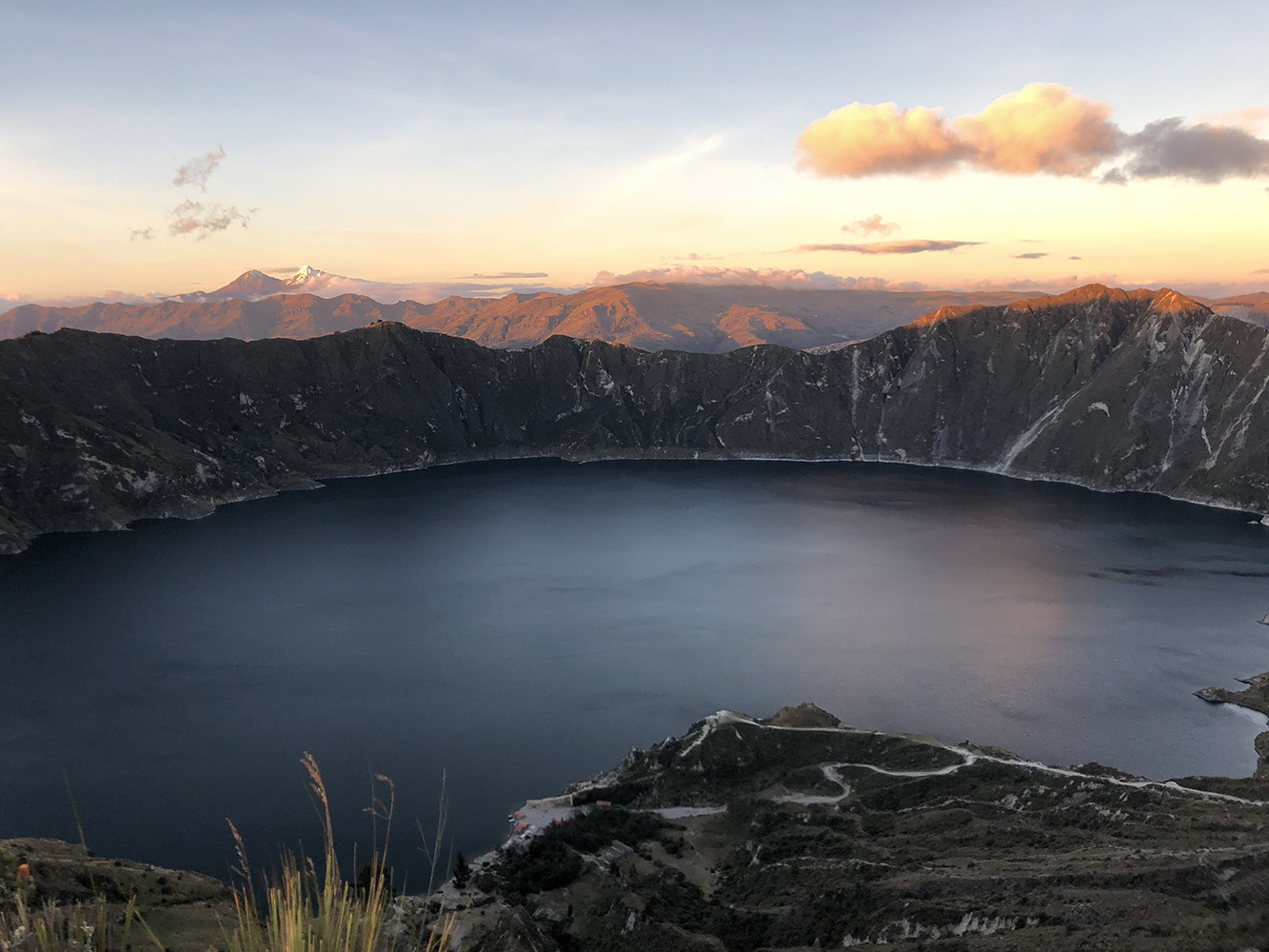
We packed up our gear, pre-cooked food, a thermos of our own homebrew, flask of some meh-ish rum, and headed off. *Have no fear; Max, Jup, Tali, and Gandalf were all well-cared for by our neighbour while we were away.
It took over 8 hours and five separate buses to get there. Cotacachi to Otavalo, Otavalo to Quito Carcelen Terminal, Carcelen to Quito Quitumbe Terminal, Quitumbe to Latacunga, Latacunga to Quilotoa. Some different planning could have cut down on that, with some more direct routes from town to town, but we were grateful for the bathroom breaks and opportunities to grab some food along the way. Being stuck on a bus for hours when hungry not knowing if bus food (bus food is a subject that deserves a whole other blog post) will ever happen is a bad bad thing.
The drive was as long as it was astoundingly beautiful. When you get so high in the mountains you realize you’re pretty much eye to eye with the peaks, you’re pretty high. Up among and sometimes above the clouds in many places, through ever-winding roads.
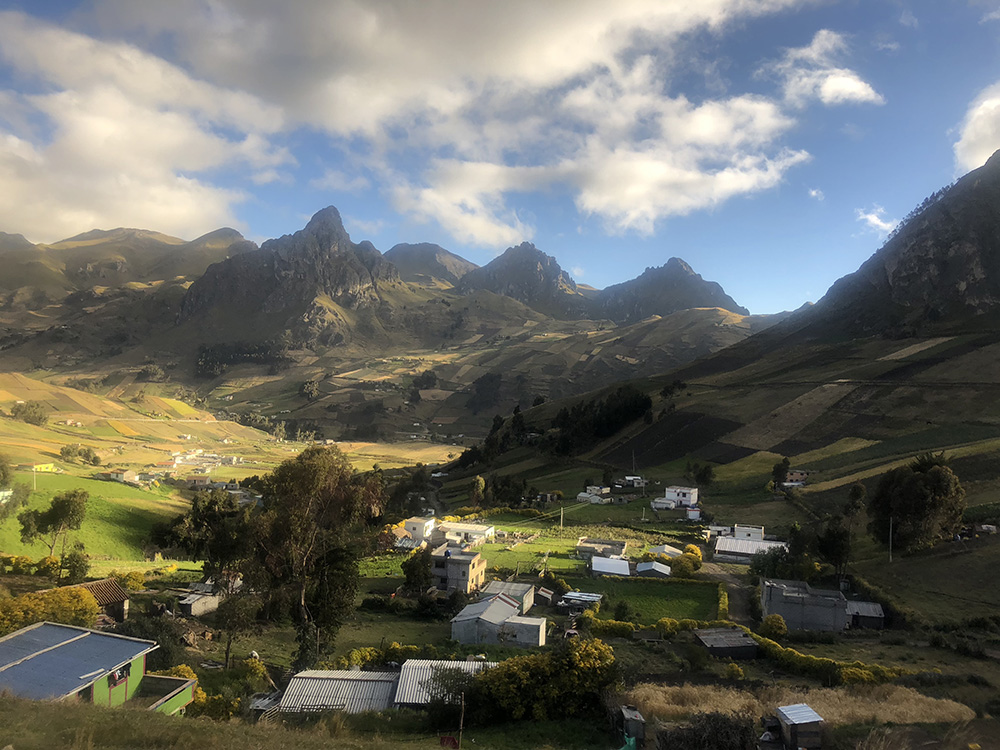
This strange new town.
When Malena visited Quilotoa over 10 years ago, the only thing there besides the caldera was a lady with a tent selling scarves. Now an entire small town has emerged. Every building new within the last few years, and many still only half-finished shells. Pretty much every building was either a small hostal/hotel, or a souvenir store selling scarves, sweaters, and other usual items with the occasional restaurant or tienda. Looks as though the place was just slapped up as quick as they could to start servicing the increase in tourism.
After such a long haul day the thought of hiking for several more hours and potentially setting up tent in the dark and windy night sounded absolutely the opposite of amazing. We decided to crash at a hostal for the first night. We wandered for a bit with a new Argentinian friend we’d met on the bus ride and finally settled on a place promising dinner and breakfast included in the price and hot water for showers.

After dumping off our gear we wandered a bit more and caught an amazing view of other peaks in the distance, at sunset in full glowing pinky purple glory. Which we were lucky to see as the next two days those same peaks were completely obscured by clouds. The timing of our arrival was perfect and the caldera was every bit as stunning as we’d imagined. The pictures online hardly do it justice.
Back to the hostal: not only did they not have hot water, they had no water at all.
Supposedly no one in town did. Would have been nice if they’d told us that before we got settled in. All the amenities of a newly and hastily built town on a mountainside! Well a short while later at least water was flowing again, although no hot water still but they were kind enough to heat up a big pot for some old-shool washing at least. And the room smelled funny, like they didn’t install U-bends in the bathroom drain pipes. So we slept on that first cold night with a window open for some fresh air. The bed was comfortable and the blankets warm, so we were good there. The entire town here is new and they’re still figuring things out as they go.
Also, their food was great. Soup, seco de pollo, coffee and tea, bread with queso, the usual tipico. Perfect for that cold night and brisk morning. Afterward breakfast we’d shared some of our homebrew with our travelling companion, said our goodbyes, and wandered off to begin our hike. Along the path all the while keeping an eye out for a good spot to setup the tent.
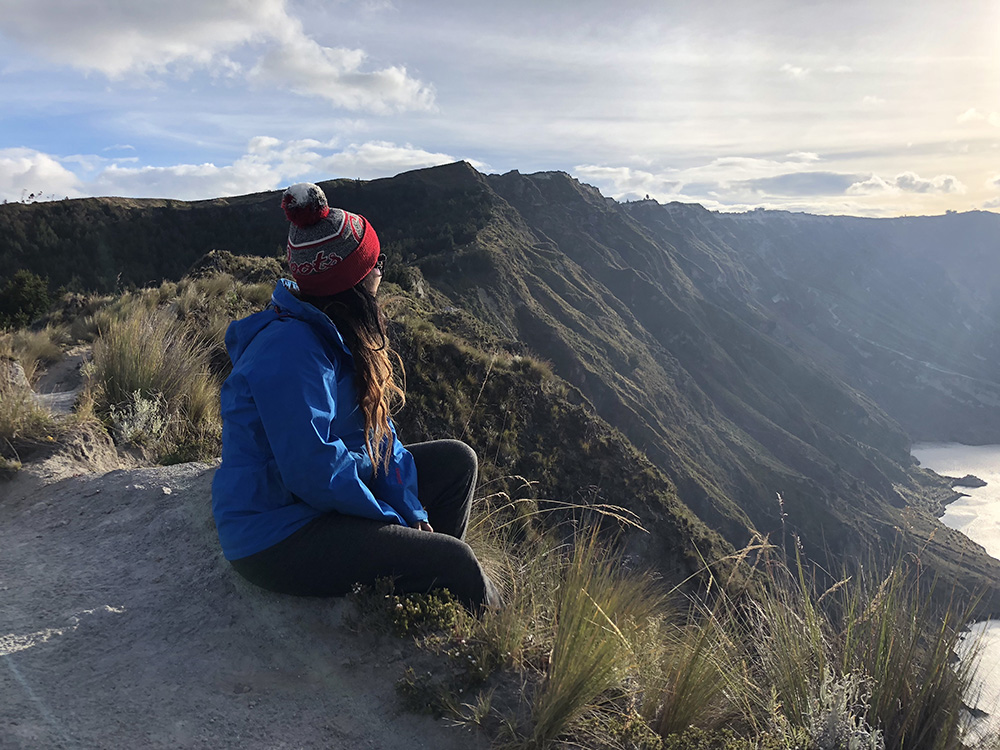
There really wasn’t any. The path was mostly narrow, rocky and practically no areas to the sides that could fit even our tiny tent, let alone provide enough protection from the wind where we might even be able to get a fire going for tea and dinner. The drop-off over the side of the path was a sheer drop in many places, straight to the water below or some friendly happy looking jagged rocks.
Oh yah, and that wind.
It was Bad. Capital B Brutal Bad. Sometimes it felt like we’d be blown over the edge to say hi to those friendly rocks below.
We stopped at a secondary location of the Quilotoa area called Shalala where they evidently had facilities and a designated camping area. Well there was a few small empty buildings, a loo with no running water, and some picnic table style things attached to tree trunks. We found one with a surprisingly working power outlet attached and sat down for lunch and to charge up. There was maybe one other person in the area, and the place looked deserted. Not developed enough or getting enough people traffic yet to justify staffing the space we guess. At least for now.
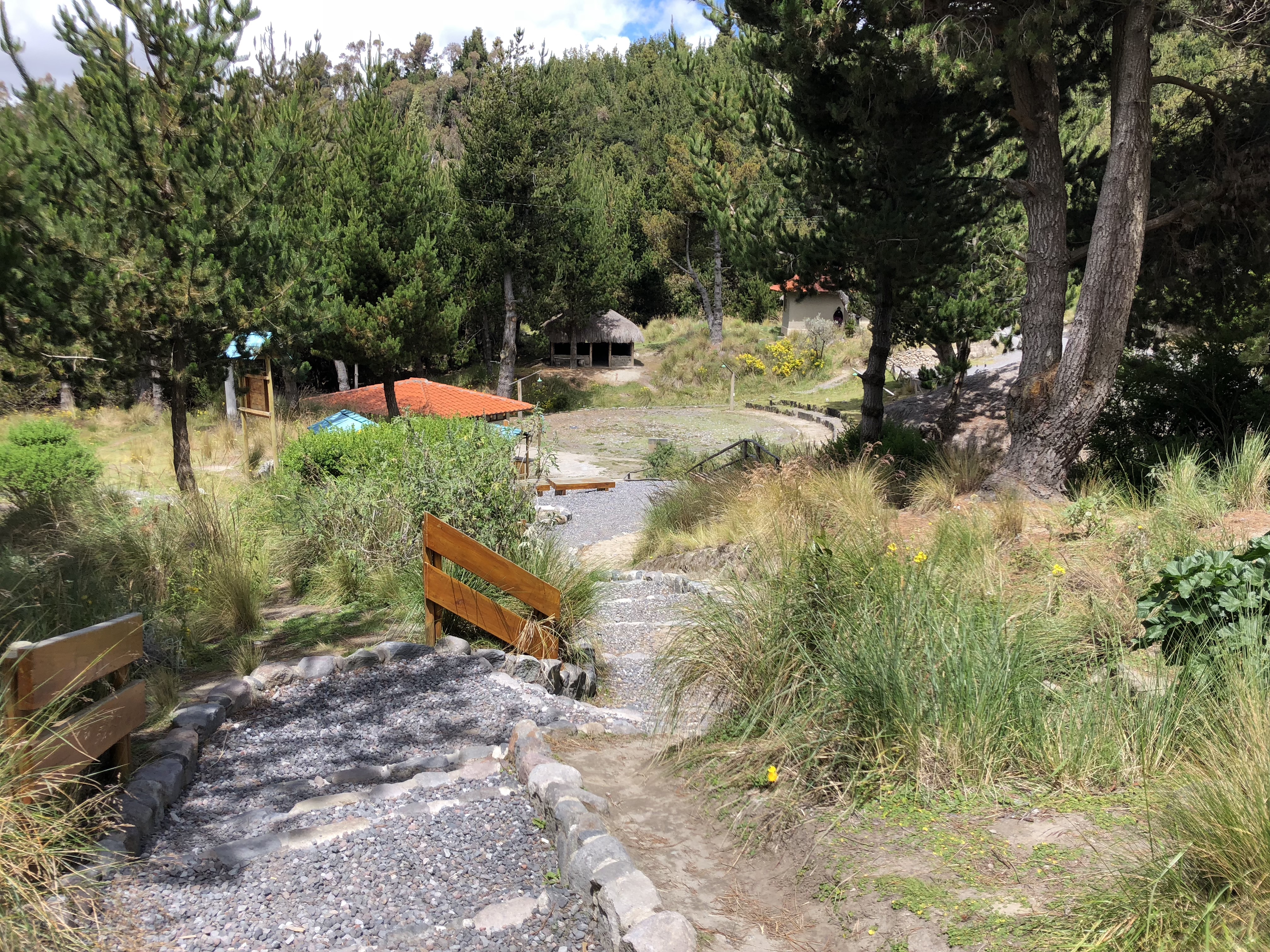
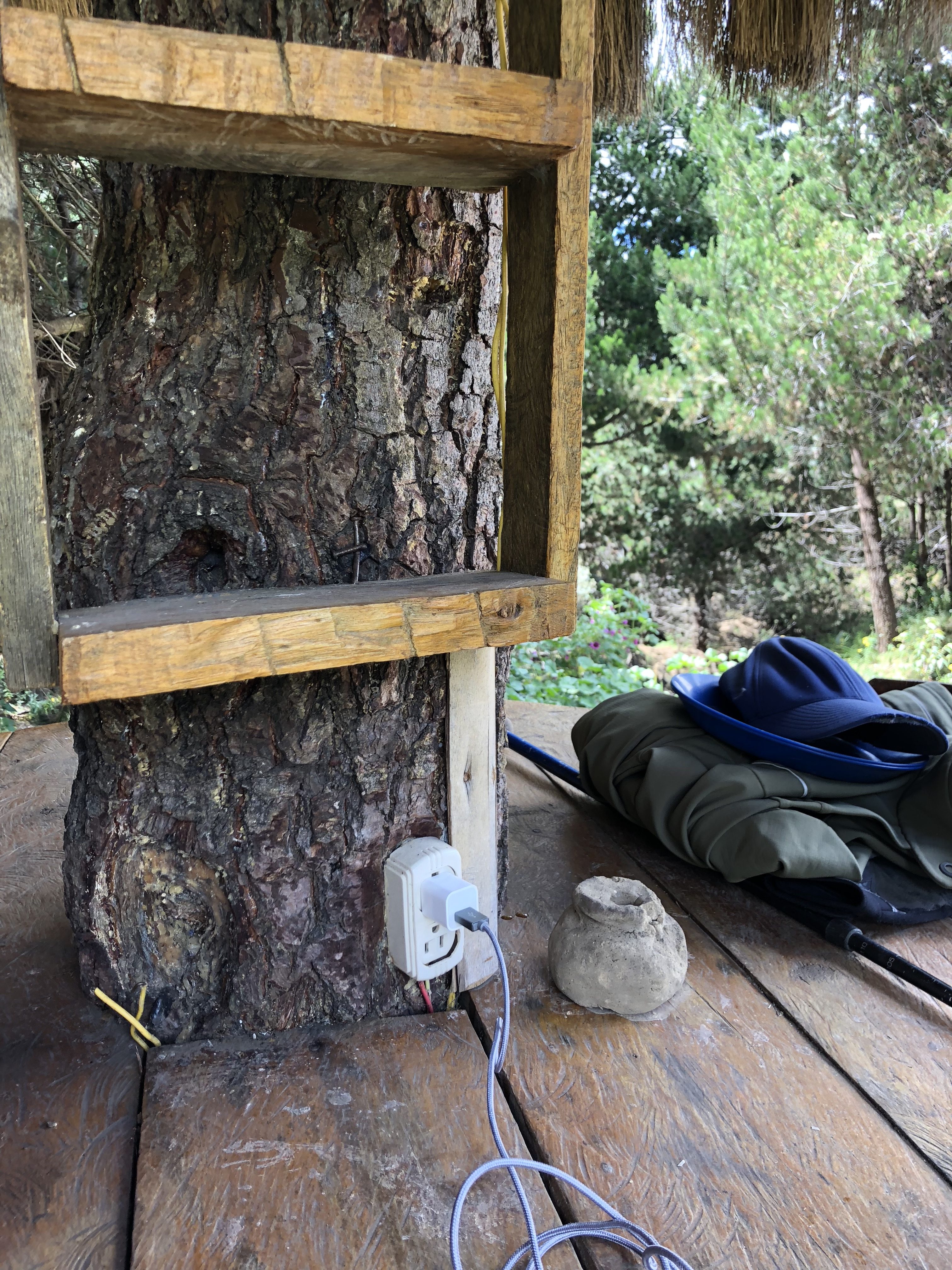
We decided against the camping area there as it was very far off the trail and no view of the lake, which was what we wanted to see when we woke up in the morning. So we packed up and kept going. There was a gorgeous wood lookout platform just at Shalala’s entrance, and a family had setup a picnic there. We could see why, the view from there was fantastic, it was protected from the wind, and multi-pane thick tempered glass walls keep you from falling over the edge while letting you enjoy that view.
Then we found it. Our campsite!
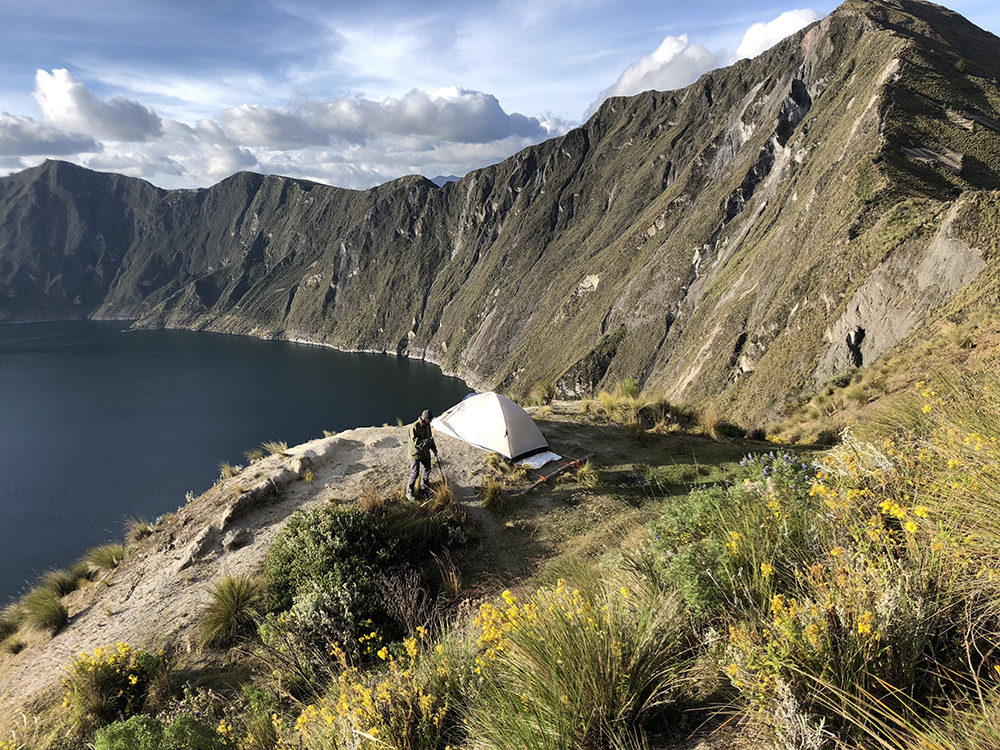
Just past Shalala, slightly downhill and off the path was a relatively flat patch of ground with a commanding view of the entire caldera. People had setup there before, there was a couple small old burn spots from old campfires. It was somewhat protected from the wind, wide enough for our tent and space to get a fire going. It was only early afternoon, but after we got the tent up and our gear stowed we decided to take a much deserved nap. It was still really windy and Roger actually tied a big log to our tent to keep the support pegs from being pulled out of the ground.
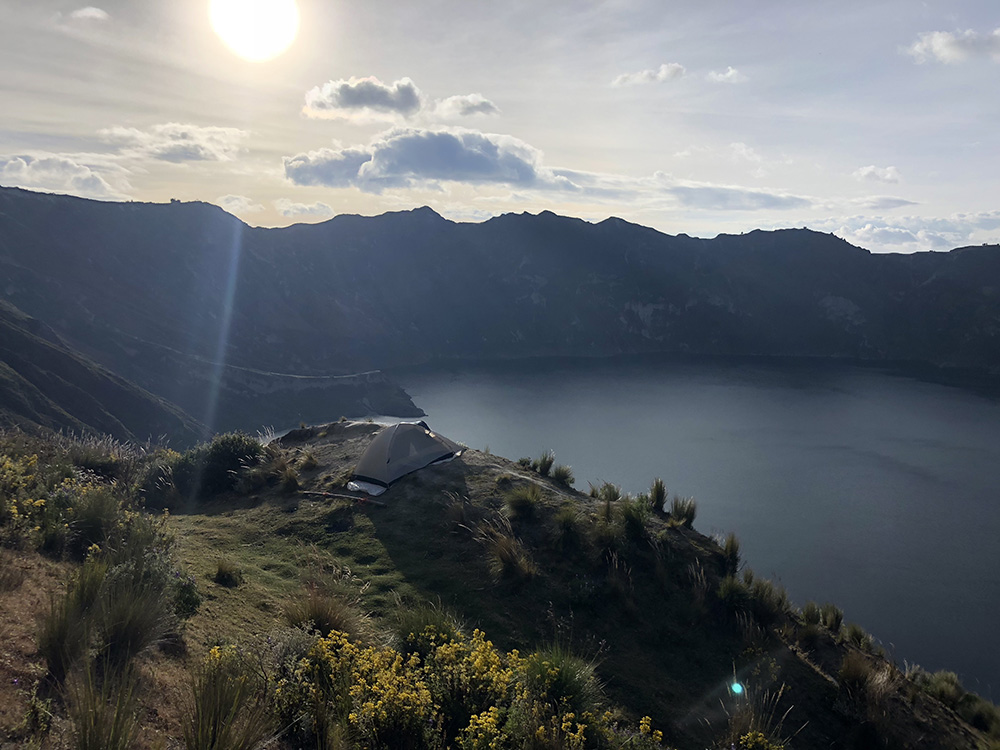
After snoozing we got a fire going. Tea with rum, soup with pasta and sausages, and some beer later we were enjoying the chillout. The sunset was a beauty.
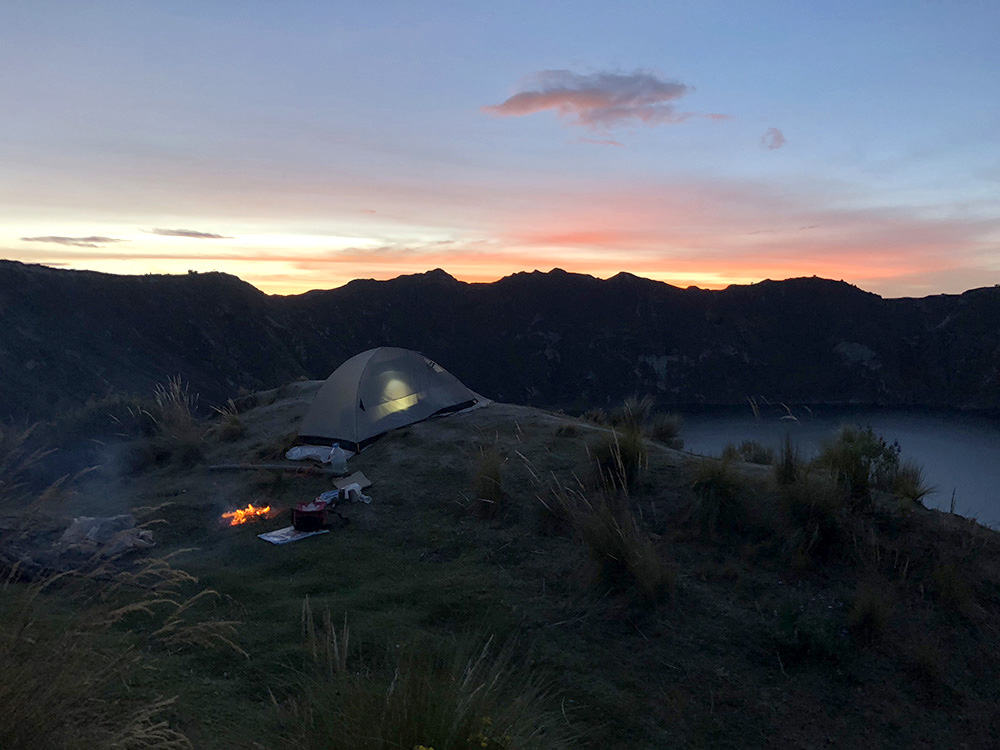
After a somewhat uncomfortable night sleeping with all the wind and that we set the tent up on a not-entirely flat spot, we had some more tea and breakfast, packed up and got going on the rest of the trail loop around the caldera.

So we barely made a dent in the length of the trail that first afternoon and now we were paying for it. The very first bit past our campsite was two straight hours of uphill climbing to the highest peak of the entire path. Of course we had to take some pictures there at the sign marking the highpoint.
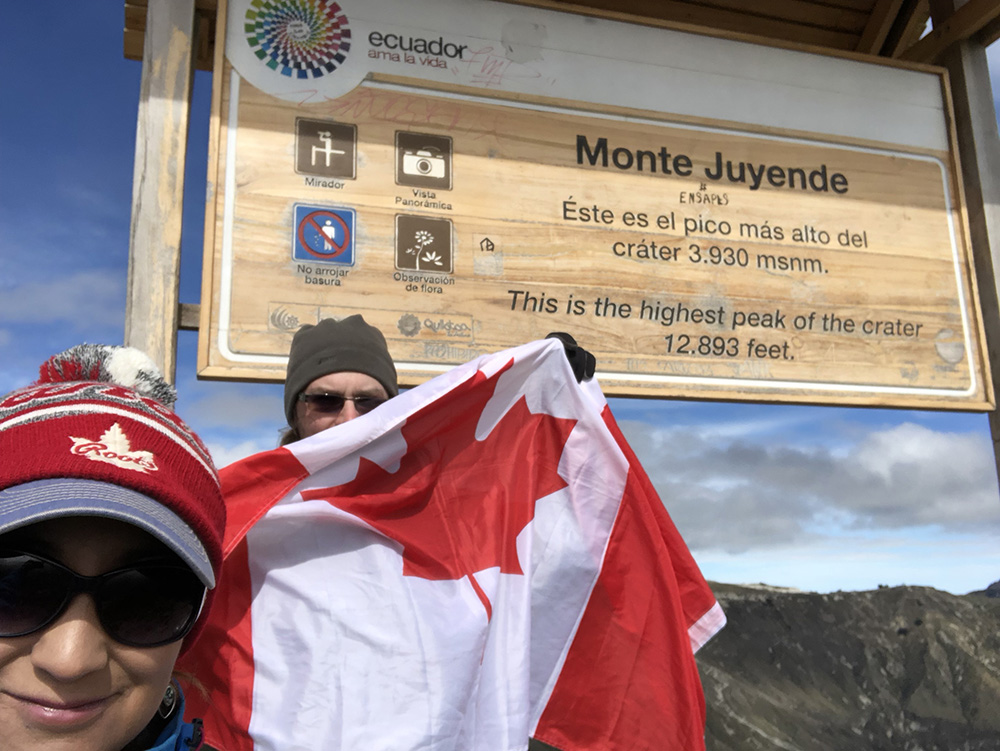
3,930m (or 12,893 feet, which just sounds more impressive).
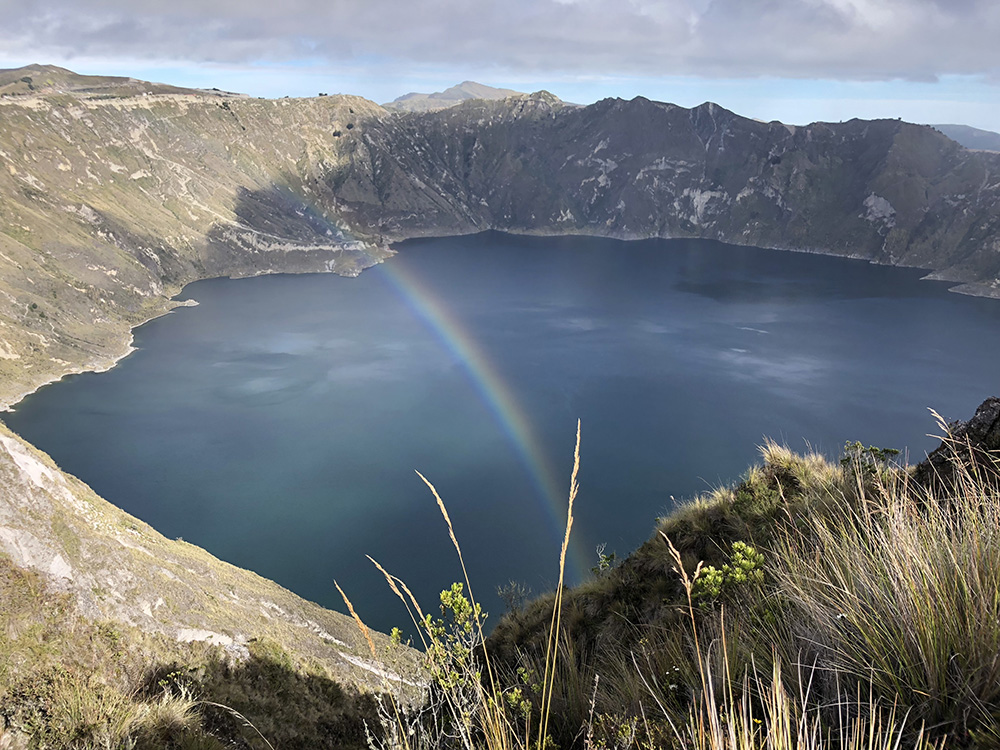
So yah, kinda glad all the firewood, and most of the food and water weight were now gone. Even after that peak there was still plenty of ups and downs to go before we make it back to the town.
Cows on Top of the World!
So here we are, hiking this crazy trail at nearly 4km above sea level feeling all badass and wouldn’t you know it? We hear moo.
Who me?
Yes Moo.
To our left being the caldera and the huge cliff edge, but to our right is still a fairly steep slope complete with plowed fields. And cows. And people doing their thing. There were families up there tending to their fields and cattle, kids playing with their dogs. Now that is badass.
There was a couple points where weariness crept in and we took some much needed breaks to recharge, it was a long trek and we didn’t sleep all that well the night before. Those little red blocks of guava (guayaba) paste are one of the best damn things in the world for an energy boost and they’re delicious. You can find them in all manner of shapes and sizes anywhere in Ecuador and sadly we didn’t bring nearly enough.

We got ours at a stall at one of the Quito bus terminals. There are many stalls, and every single one of them will sell these little blocks of guayaba goodness.
Eventually, as we stumbled along, getting more and more tired, wind-blasted and drained. And in what we’d hoped was the final leg of the loop we came across a small wood cabin with smoke coming out of it. There was a sign outside: “Cafe y Te”, and a lone woman with a warm smile on her face. We decided to stop for a drink and she poured us out two cups of tea, even though Roger had asked for coffee. The tea she said, you can add coffee to. Alright then, confusion passed, so he adds some instant coffee to it and it was amazing. We are presuming it was coca tea, and it worked great with the coffee, kicked us in the ass and got us going again.
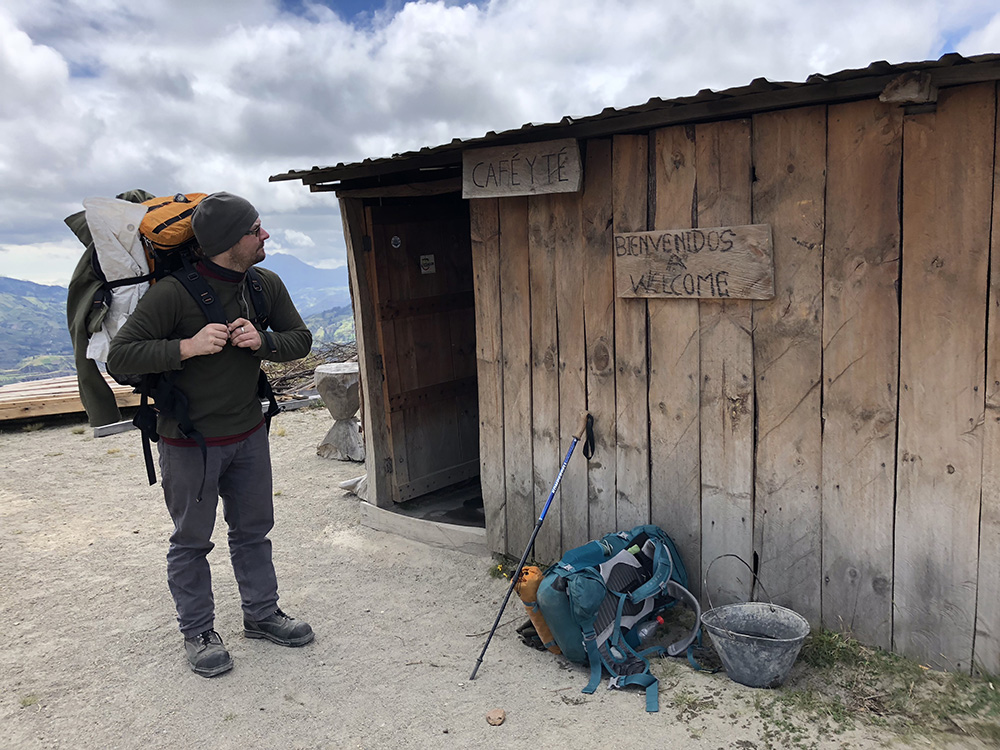
After the tea cabin, we came across the first fork in the road since Shalala. Now everyone generally goes along the trail clockwise from town. So this path does’t even come into view. But since we went counter-clockwise to go towards Shalala first, we walked right into it. After all the ups and downs over every peak and more to come, Roger decided why not try this path along the inside of the caldera? Looked like it was mostly straight for a good long way.
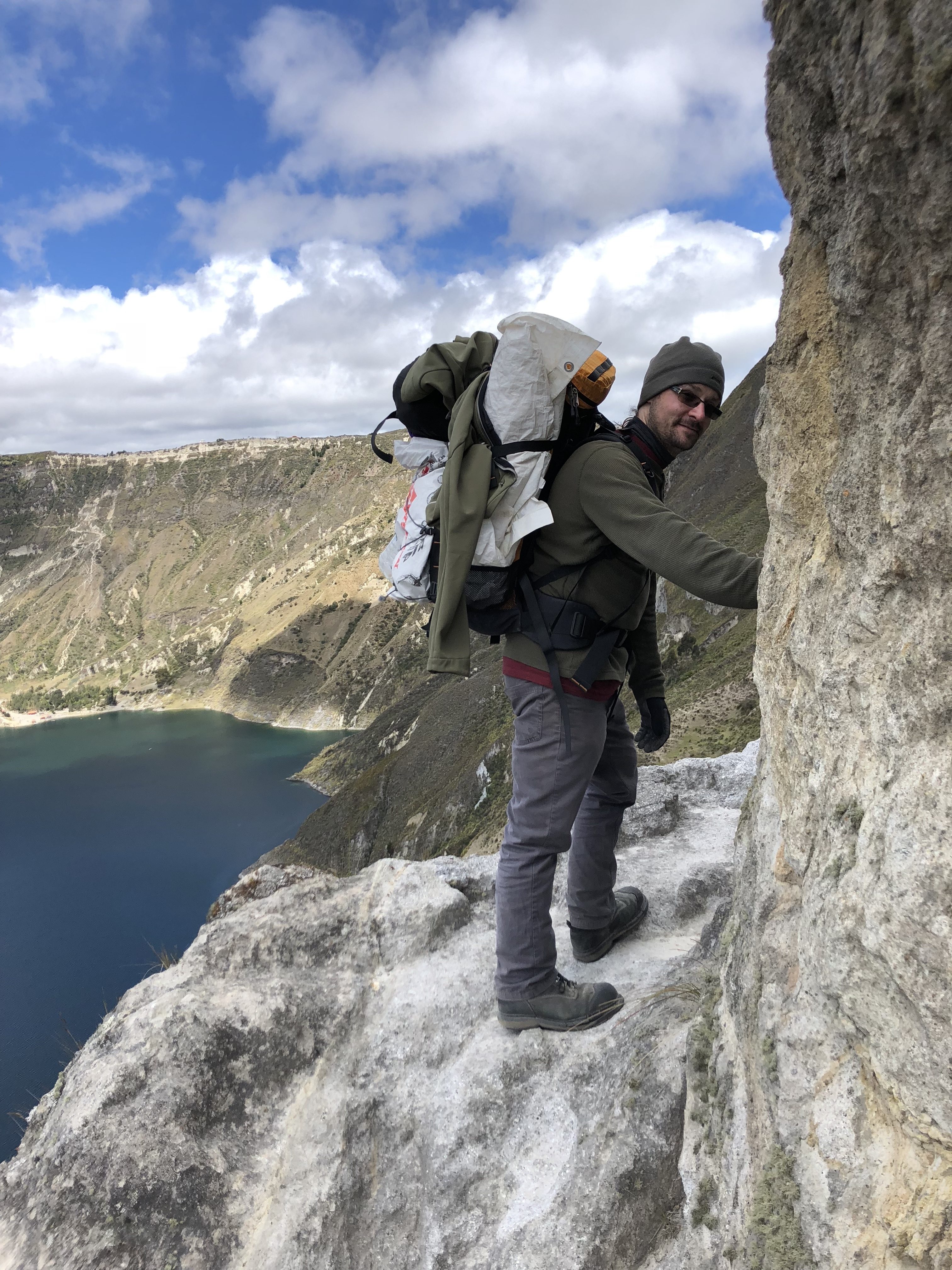
*famous last words
So along we go, and very quickly the path turned from a path, to carved rock steps, steep climbs up narrow crevices with our big camping packs, plenty of places where the drop over the side could easily been even more fatal, and lots and lots and lots of animal droppings.
We’d basically taken the goat/alpaca path.
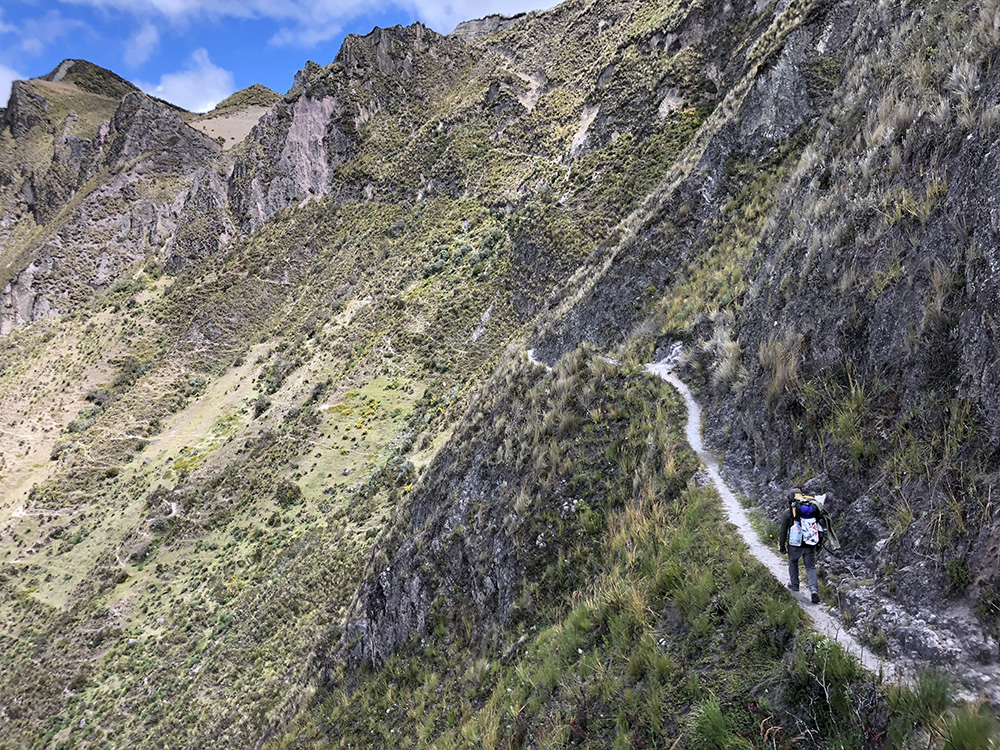
Roger’s directional sense is an adventurous practical joker sometimes.
The good that came out of this, we found another awesome camping spot. Hidden from view, on flat rock facing the lake. We have already decided next time we go there we will camp there instead. It is a bit off the beaten path to get there, especially with such narrow paths, but worth the hike.
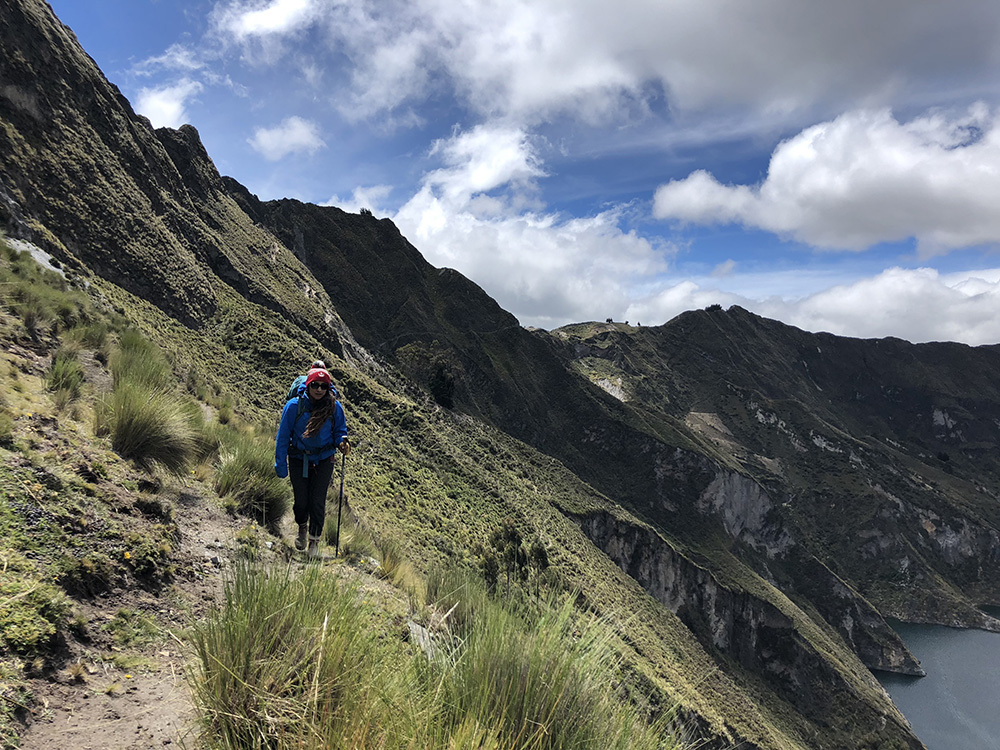
Eventually after several guesses and plenty of breaks to catch our breath, we ended up back on the main trail path right where we’d wandered the very first night to catch the sunset view. Nice bit of a eureka moment. A bit farther along and we were back in town grabbing beer with a fruit salad and changing into some non-smelly clothes. Glad to be out of the wind.
On our way out we grabbed some canelazo to warm up and sooth the nerves while we waited for the bus back to Latacunga. We eventually got back to Cotacachi around midnight. Exhausted, we didn’t even worry about unpacking our gear and just crashed.
It was a great hike, a beautiful area, and one of the toughest trails we’ve done in a long time.
